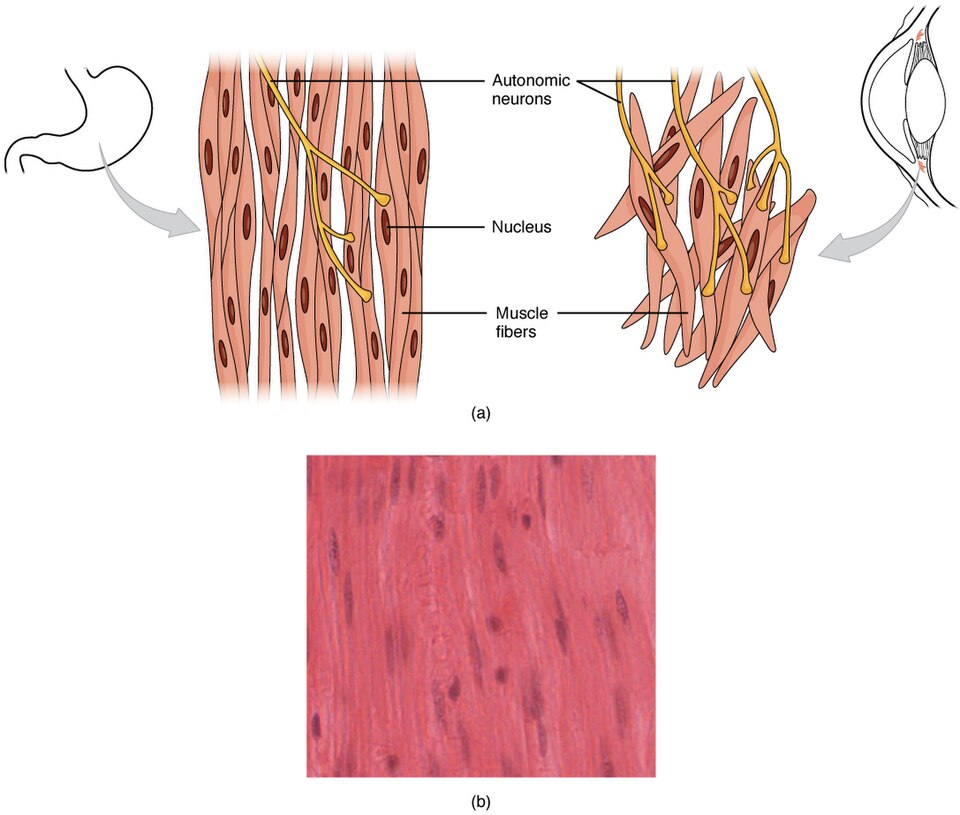7.5 Smooth Muscle
Smooth Muscle[1]
Smooth muscle contraction produces involuntary movements in the walls of hollow organs like the urinary bladder, uterus, stomach, intestines, and in the walls of passageways, such as the arteries and veins of the circulatory system, and the tracts of the respiratory, urinary, and reproductive systems. Smooth muscle in the walls of arteries is important to regulate blood pressure, and smooth muscle in the skin, visceral organs, and internal passageways is essential for moving materials through the body. Smooth muscle is also found in the eyes, where it changes the size of the iris and pupil and alters the shape of the lens. It is also in the skin where it causes goosebumps in response to cold temperature or fear.
Smooth muscle fibers are spindle-shaped (wide in the middle and tapered at both ends, somewhat like a football) and have a single nucleus; they range from about 30 to 200 μm (thousands of times shorter than skeletal muscle fibers), and they produce their own connective tissue, endomysium. See Figure 7.34[2] for an illustration of smooth muscle.

Although they do not have striations and sarcomeres, smooth muscle fibers do have actin and myosin contractile proteins. Because the actin and myosin are not arranged in a regular pattern in smooth muscle, the cytoplasm of a smooth muscle fiber has a nonstriated appearance resulting in the name – smooth muscle.
Smooth muscle is under involuntary control; thus, it cannot be consciously controlled. The triggers for smooth muscle contraction include hormones and nervous system stimulation by the ANS (autonomic nervous system). In certain locations, such as the walls of visceral organs, stretching the muscle can trigger its contraction (the myogenic response).
View the University of Michigan WebScope to explore a slide of smooth muscle tissue in greater detail.
- Betts, J. G., Young, K. A., Wise, J. A., Johnson, E., Poe, B., Kruse, D. H., Korol, O., Johnson, J. E., Womble, M., & DeSaix, P. (2022). Anatomy and physiology 2e. OpenStax. https://openstax.org/books/anatomy-and-physiology-2e/pages/1-introduction ↵
- “1021_Smooth_Muscle_new” by OpenStax is licensed under CC BY 4.0 ↵
Involuntary, non-striated muscle tissue found in the walls of organs.

